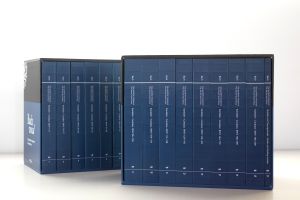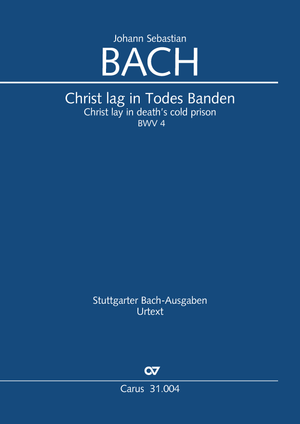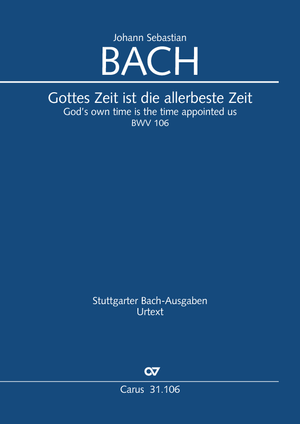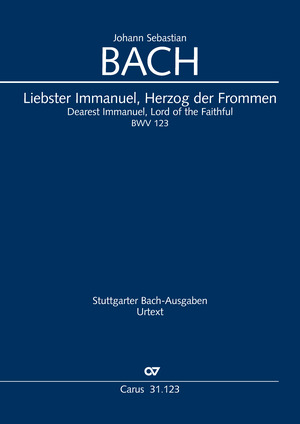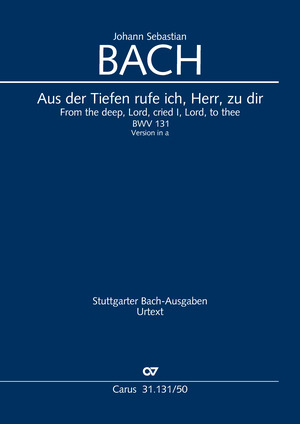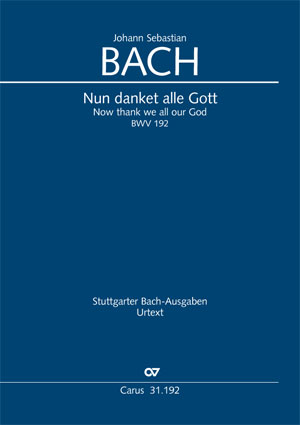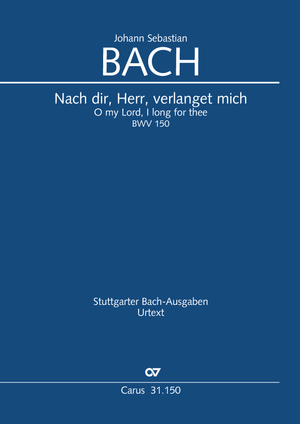
The cantata Nach dir, Herr, verlanget mich (O my Lord, I long for thee) BWV 150 is one of the earliest cantatas from Bach’s Mühlhausen period. Its authenticity was long disputed, partly because of the stylistic characteristics of this early work, but also because the cantata only survives in sources dating from the period after Bach’s death. However, in recent years a hidden dedication to Conrad Meckbach, a member of the Mühlhausen town council and patron of Bach, has been deciphered: the initial letters of the free poetry reveal the acrostic "Doctor Conrad Meckbach" (in the 18th century spelling), revealing a link to the city of Mühlhausen and almost certainly confirming Bach’s authorship of the cantata. The occasion of the composition of the work is still unknown. The small instrumental scoring for just two violins, bassoon, and continuo, plus the fact that only the soprano is given a solo movement, suggest a performance with modest resources.
Purchase
Additional product information
-
Composer
Johann Sebastian Bach
| 1685-1750Johann Sebastian Bach is one of the most important composers of Western music history. He came from a widely ramified musical dynasty, which produced numerous musicians and organists in the Thuringian-Saxon area.
Bach vocal
Ever since Carus-Verlag was founded in 1972, publishing the music of Johann Sebastian Bach has been a special focus for us. In the 2017 Reformation anniversary year we completed the Bach vocal project. Bach's complete sacred vocal works are now available in modern Urtext editions, together with performance material. A complete edition of all the full scores is also available in a high quality box set. Personal details
-
Editor
Klaus Hofmann
| 1939
-
Continuo realization
Klaus Hofmann
| 1939
-
Translator
Jean Lunn
Frequent questions about this work
Is cantata BWV 150 by Bach or not?
“Nach dir, Herr, verlanget mich” is one of the most popular Bach cantatas of all. Since its publication in 1977, the edition by Klaus Hofmann has frequently been reprinted as it has been in constant demand. But at the beginning the cantata seemed destined to become anything but a bestseller. Preserved in a defective copy from the 1750s by Christian Friedrich Penzel, a former prefect at St Thomas’s School, its authenticity was hotly debated by Bach scholars. In the Bach-Jahrbuch 1913, the leading Bach scholar of the time Arnold Schering denounced the work and the “adolescent St Thomas’s pupil Penzel” particularly strongly, and warned against “allowing ourselves to be led astray by believing in the personal style and the powerful spirit of our Bach”. Gradually, however, it came to be understood that Bach did not fall from the sky as a fully-formed master, and that his first attempts in the field of cantata composing must have been a tentative search, the results of which were still far removed from the style of the Leipzig cantatas. And with the advances in Bach research from the mid-20th century onwards, the conviction grew that this might indeed be a work by Bach from his time in Arnstadt or Mühlhausen. The decisive breakthrough was made in 2010 by the renowned Bach scholar Hans-Joachim Schulze. He was able to demonstrate that the initial letters of the verses in the freely-written portions of the text form the name of the dedicatee of the cantata, namely “Doctor Conrad Meckbach”. Meckbach (1637–1712) was a patron of Bach. As mayor of Mühlhausen he had recommended Bach to the town council in 1707 for the position of organist at Divi Blasii.
Why is cantata BWV 150 especially popular?
This popularity is not by chance. Apart from the directly communicative musical beauty of the “magic of the opening”, it combines several practical advantages: the instrumental scoring for two violins, bassoon and continuo is for chamber music-like forces. Overall, the solo parts are not difficult and can also be performed by good choral singers. But above all, the choir has beautiful and important tasks in conveying the biblical texts. These verses from Psalm 25 form the framework of the work in three demanding movements, and are full of powerful pictorial imagery. The biblical texts contrast with freely-written poetry which, as we now know, makes reference to the mayor, Meckbach; but this remains sufficiently general that it does not preclude the use of the cantata in worship, and the psalm text always remains to the fore in terms of content.
Did you know that ...
... the initial letters of the lines of verses in the freely-written portions of the text form the name of the dedicatee of the cantata, namely “Doctor Conrad Meckbach”. Meckbach (1637–1712) was a patron of Bach. As mayor of Mühlhausen he had recommended Bach to the town council in 1707 for the position of organist at Divi Blasii. With this discovery, in 2010 the renowned Bach scholar Hans-Joachim Schulze was able to present significant evidence that the cantata was by Bach.
 There are no questions and answers available so far or you were unable to find an answer to your specific question about this work? Then click here and send your specific questions to our Customer Services!
There are no questions and answers available so far or you were unable to find an answer to your specific question about this work? Then click here and send your specific questions to our Customer Services!


